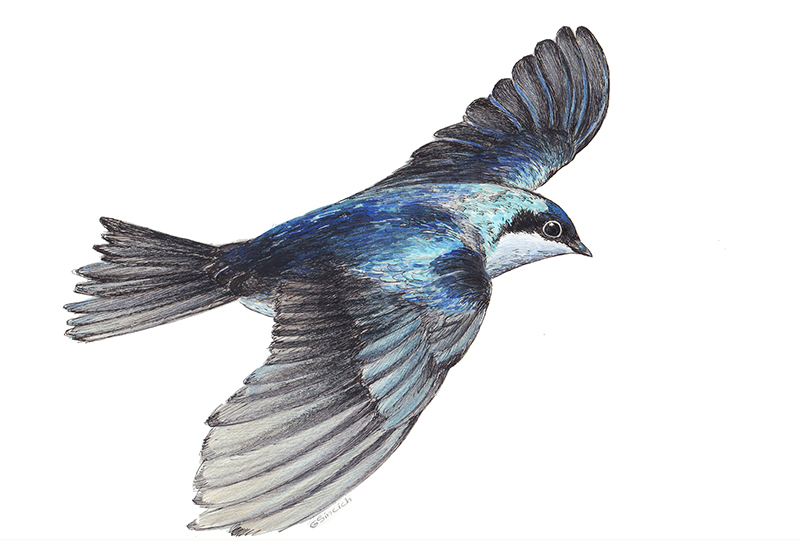Hawk-eyed songbirds
06-12-2017

Hawks and falcons have been portrayed as examples of animals with magnificent vision in the animal kingdom. However, a recent study published in the American Naturalist by former Ph.D. student Luke Tyrrell and Prof. Esteban Fernandez-Juricic found that some songbirds, which are much smaller and phylogetically distant relatives to hawks and falcons, may have evolved similar sensory specializations. More specifically, tree swallows, which are insectivorous birds, have long eyes and two centers of acute vision per eye giving them superior visual acuity. This means that while flying they have four spots with high visual resolution in the frontal part of their visual field, which may enhance the chances of detecting flying insects, chasing them at close quarters, and successfully catching them. This is the first study showing such sensory visual specializations in a songbird.
Source: Tyrrell, L.P. & E. Fernández-Juricic. 2017. The hawk-eyed songbird: retinal morphology, eye shape, and visual fields of an aerial insectivore. AMERICAN NATURALIST 189: 709-717.
Link: http://www.journals.uchicago.edu/doi/abs/10.1086/691404
Illustration: Gabriela Sincich